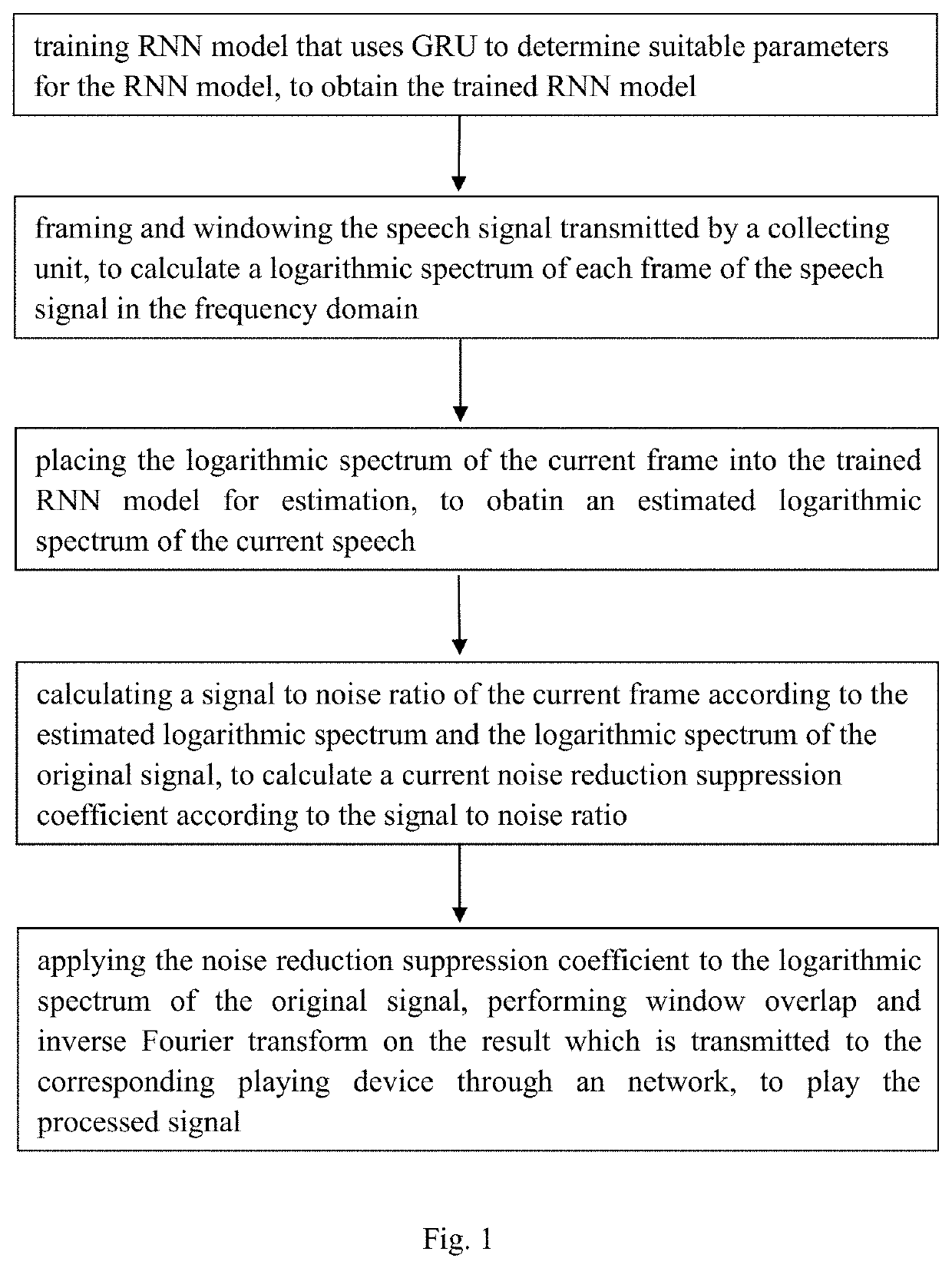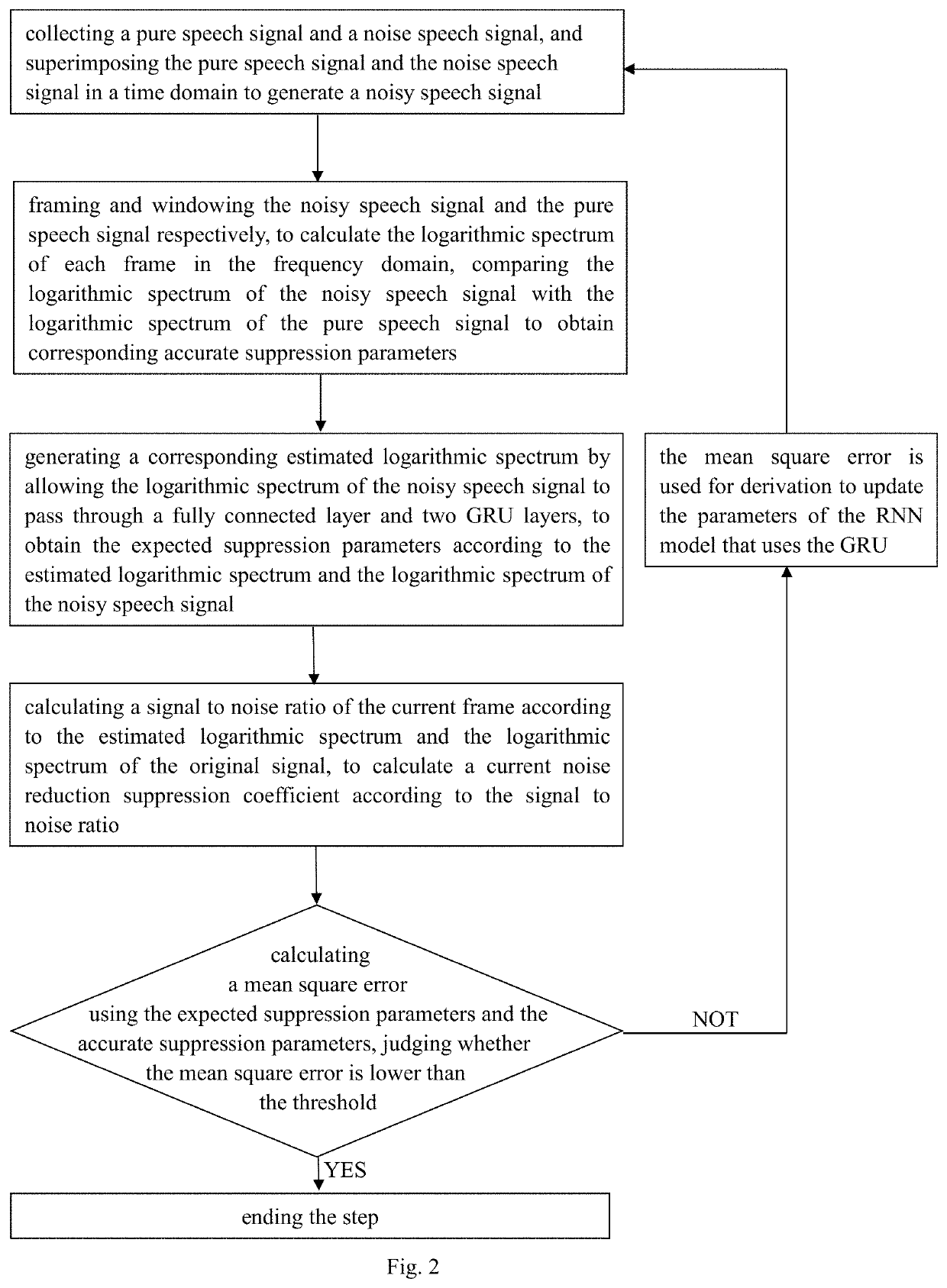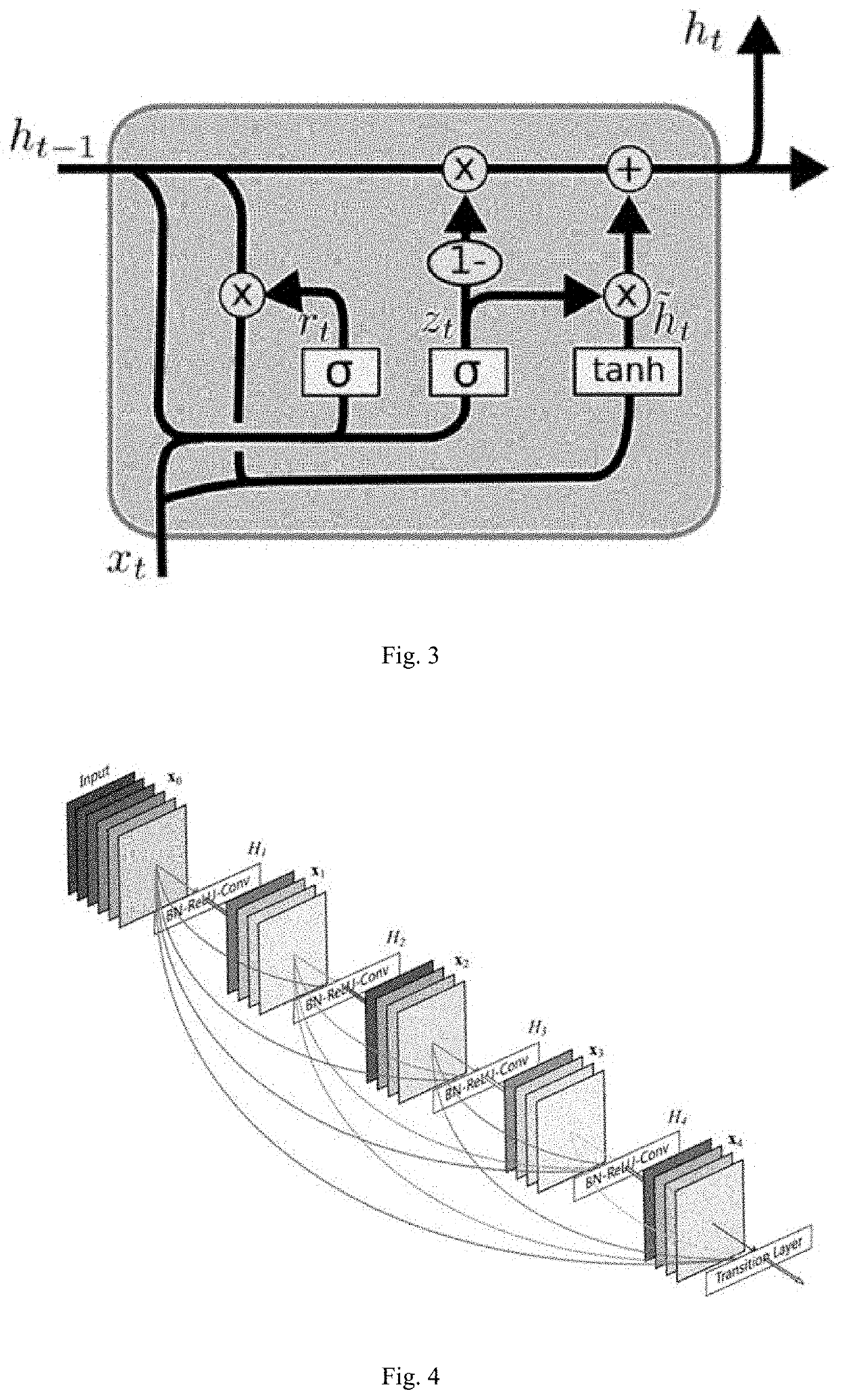Methods and devices for rnn-based noise reduction in real-time conferences
a real-time conference and noise reduction technology, applied in the field of real-time conference noise reduction methods and devices, can solve the problems of high cost and complicated arrangement of microphone arrays, significant effect on the smooth bottom noise of the environment, and the inability to accurately estimate sudden noise, etc., to achieve further noise reduction, reduce noise, and reduce noise
- Summary
- Abstract
- Description
- Claims
- Application Information
AI Technical Summary
Benefits of technology
Problems solved by technology
Method used
Image
Examples
Embodiment Construction
[0033]The terminology as used herein is for the purpose of describing particular embodiments only and is not intended to be limiting of the disclosure. As used herein, the singular forms “a”, “an” and “the” are intended to include the plural forms as well, unless the context clearly indicates otherwise.
[0034]As shown in FIG. 1, a method for RNN-based noise reduction in a real-time conference as described herein comprises the following steps: S 1, training RNN model that uses GRU to determine suitable parameters for the RNN model, to obtain the trained RNN model; S2, performing frame-and-window for the speech signal transmitted by a collecting unit, to calculate a logarithmic spectrum of each frame of the speech signal in the frequency domain; S3, placing the logarithmic spectrum of the current frame into the trained RNN model for estimation, to obtain an estimated logarithmic spectrum of the current speech; S4, calculating a signal-to-noise ratio of the current frame according to th...
PUM
 Login to View More
Login to View More Abstract
Description
Claims
Application Information
 Login to View More
Login to View More - R&D
- Intellectual Property
- Life Sciences
- Materials
- Tech Scout
- Unparalleled Data Quality
- Higher Quality Content
- 60% Fewer Hallucinations
Browse by: Latest US Patents, China's latest patents, Technical Efficacy Thesaurus, Application Domain, Technology Topic, Popular Technical Reports.
© 2025 PatSnap. All rights reserved.Legal|Privacy policy|Modern Slavery Act Transparency Statement|Sitemap|About US| Contact US: help@patsnap.com



